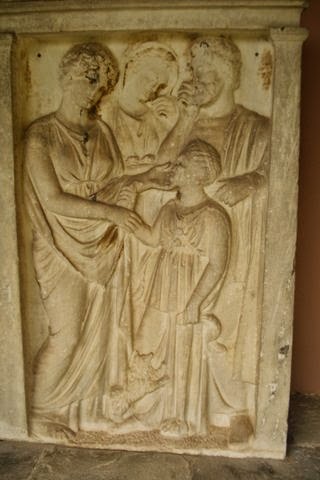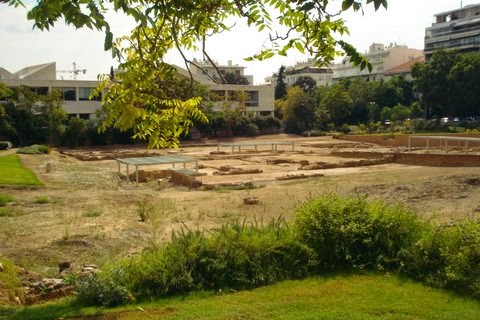Courtyard of the Byzantine & Christian Museum
Votive Boat
Silver Votive Offerings
There's a large choice of museums to visit in Athens, from the spectacular New Acropolis Museum, and older National Archaeological Museum to much small but just as significant museums. Each time I go to Athens I try to visit a couple of these interesting collections of Greek history. This time I decided to stop by the
Byzantine and Christian Museum on Vassilis Sofias as I hadn't been there in a number of years. The museums was completely refurbished in 2004 and displays a number of wonderful artifacts, altogether 3000 of them including coins.
The beautiful buildings housing the museum were once the home of the Dutchesse de Plaisance, an eccentric French-Philhellene, widow of a Napoleonic general who helped fund the War of Independence.
The exhibits start with the early days of Christianity and follow through the Byzantine era with displays of everything to ordinary daily life in those times to religious icons, parts of early churches, mosaics of floors and wall frescoes, and a Coptic section displaying clothing as well as other artifacts.
Check the website for more details at
www.byzantinemuseum.gr
The Museum is closed on Mondays and certain holidays. Full admission is 4 Euro, reduced 2 Euro
The War Museum
In
contrast, just down the street is the
War Museum, a memorial endowed after the 1967-74 junta. It's open Tues- Sat from 9 am to 2 pm and it's free. But I didn't go inside, just looked at the
outdoor displays of planes and artillery pieces. There are some antiquities inside, not all labelled in English, with the history of warfare from the model of a plane that dropped bombs on Turkish positions in the Balkans in 1912 to a display about Cyprus that sends a firm message to Turkey.
More appealing to me was the newly restored
Lyceum of Aristotle that 's just around the corner.
I'll post photos and details about this in my next blog.
Pigeons on a Fence












































